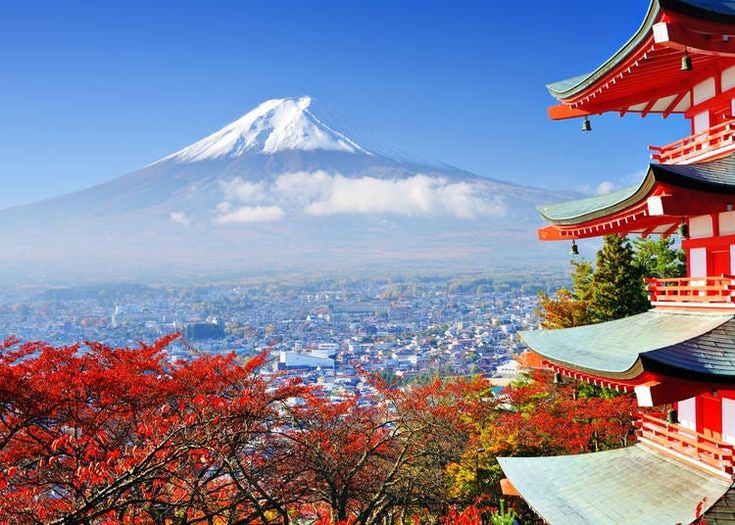
Spring in Japan is always anticipated, especially for the beauty of the cherry blossoms in full bloom. The tradition of hanami, which means “flower viewing,” is a special time for Japanese people to gather, picnic, and celebrate the beauty of nature. In this article, we will explore the history, meaning, and ways in which Japanese people celebrate hanami.
History of Hanami

The tradition of hanami has been around for centuries. Initially, during the Nara period (710-794 AD), the Japanese people admired ume (plum) trees before switching to cherry blossoms in the Heian period (794-1185 AD). Emperor Saga is known as one of the figures who popularized hanami by holding a party under the cherry blossom trees at the Imperial Palace in Kyoto. Since then, hanami has become synonymous with enjoying the beauty of cherry blossoms while enjoying sake and poetry.
The Meaning of Hanami in Japanese Culture
Hanami is more than just a flower viewing festival; it has a deeper meaning about the cycle of life. The beautiful cherry blossoms that only bloom for a few weeks symbolize the impermanence of life. The Japanese use this time to reflect on life and appreciate the beauty of nature.
Activities During Hanami

During hanami, people gather in parks or cherry blossom-filled areas to have picnics. Seasonal foods such as hanami dango (three-colored sweets), onigirazu (rice sushi), and sakura mochi (rice cakes with cherry leaves) are usually prepared. In addition, many people also bring drinks to enjoy with family and friends.
Best Time to See Cherry Blossoms

The best time to enjoy cherry blossoms is usually between late March and early April, depending on location and weather. In Tokyo, March 27 is often considered the peak of cherry blossoms. However, this time can vary in different parts of Japan.
Best Places to Enjoy Hanami
Some of the best spots to enjoy hanami in Tokyo include Ueno Park, Meguro River, and Chiyoda. In Osaka, Osaka Castle and Kema Sakuranomiya Park are popular spots. Each spot offers stunning views when the cherry blossoms are in bloom.
Yozakura Tradition: Enjoying Sakura at Night

In addition to daytime hanami, there is also the tradition of yozakura, which is viewing cherry blossoms at night. Lanterns are hung around the cherry blossom trees to provide beautiful lighting. Witnessing the beauty of cherry blossoms at night creates a magical atmosphere that is no less interesting.
Tips for Participating in Hanami in Japan
If you plan to join the hanami tradition, here are some tips:
Don’t pick cherry blossom branches: This is an important rule to keep the trees safe.
Respect other people’s space: Make sure not to disturb other people’s picnic areas.
Bring enough picnic mats: Estimate the size of the carpet so as not to disturb others.
Come early: To get the best spots, come early before the crowds.
Conclusion
Hanami is a beautiful tradition that combines the beauty of nature with reflection on life. With a rich history and deep meaning, hanami is not only a spring festival but also a symbol of Japanese culture that values the beauty and impermanence of life.
FAQ (Frequently Asked Questions)
What is hanami?
Hanami is the Japanese tradition of viewing and enjoying cherry blossoms.
When is the best time to see cherry blossoms?
The best time is usually between late March and early April.
What are the typical foods for hanami?
Typical foods include hanami dango, onigirazu, and sakura mochi.
Where are the best places to do hanami?
The best places include Ueno Park in Tokyo and Osaka Castle.
What is yozakura?
Yozakura is the tradition of viewing cherry blossoms at night with lanterns for lighting.
With all the beauty and tradition that comes with it, hanami is a unique experience that should not be missed when visiting Japan!
Citations:
[1] https://tourismforus.com/2024/04/15/o-hanami-dari-tradisi-hingga-menjadi-pengalaman-wisata-ikonik-di-jepang/
[2] https://www.viva.co.id/gaya-hidup/inspirasi-unik/1511178-pecinta-bunga-ini-5-fakta-menarik-tradisi-hanami-di-jepang
[3] https://itoen-ultrajaya.co.id/id/mengenal-budaya-jepang-hanami-2/
[4] https://www.msigonline.co.id/hanami-tradisi-piknik-orang-jepang-saat-sakura-bermekaran


